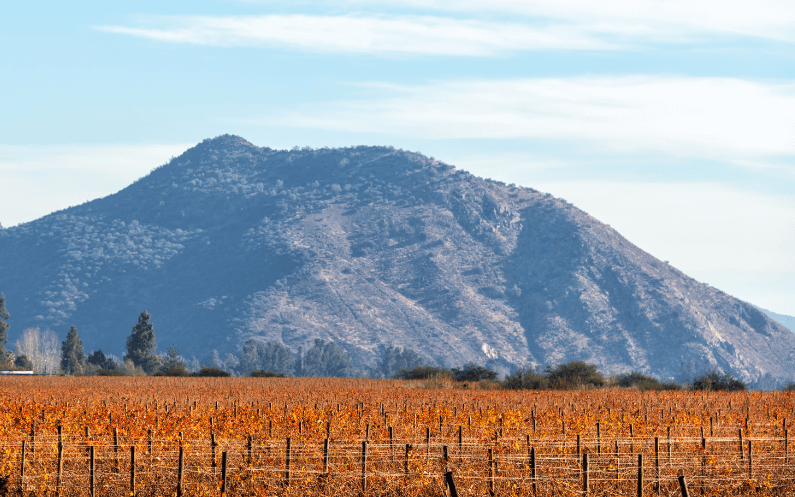Wine has long been a symbol of tradition, craftsmanship, and culture. But in the face of rising global temperatures, the future of wine grape growing is at risk, and the UK wine industry may see significant changes as a result. In a recently published study, researchers found that up to 70% of the world’s wine-producing regions could become unsuitable for grape growing if global warming exceeds 2°C. This alarming news could drastically change the industry of wine production, both globally and here in the UK.
How Climate Change is Impacting Wine Grape Growing Worldwide
Wine regions across the globe, from California to Spain and France, are facing unprecedented challenges due to rising temperatures. This means that now an estimated 70% of today’s wine-producing areas may no longer be suitable for wine grape growing.
But why is this happening? Grapes are highly sensitive to temperature changes. For centuries, winemakers have relied on the delicate balance of cool nights and warm days to produce high-quality grapes. But as the world gets warmer, that balance is tipping. Heatwaves, droughts, and erratic weather patterns are making it increasingly difficult to grow the grapes that have shaped the wine industry for generations.
Regions like Bordeaux in France, Napa Valley in California, and coastal areas of Spain and Italy are particularly vulnerable. These areas have already begun to experience the effects of extreme weather, with reduced yields and declining grape quality. In 2023, wine production fell to its lowest level since 1961 due to a combination of frost, heavy rainfall, and prolonged droughts.
What This Means for the UK Wine Industry
While the findings from the study may sound like bad news for wine grape growing in many traditional regions, there is a silver lining for countries like the UK. As temperatures rise, some areas that were previously too cold for wine production may now have the ideal conditions to grow high-quality grapes.
In fact, the UK’s wine industry has been growing steadily over the past few decades, and it’s expected to continue expanding as the climate warms. Traditionally, the UK’s cooler climate has made it difficult to produce wines that can compete with those from warmer regions. However, with global temperatures on the rise, southern parts of England, including Kent, Sussex, and Surrey, are becoming prime locations for wine grape growing.
Warming temperatures mean that vineyards in the UK can now grow a wider variety of grapes, including those used for sparkling wine, which has become a growing success story. English sparkling wines have been gaining international recognition, and some experts believe that the UK could soon become a major player in the global wine industry.
A Changing Climate and Adaptation in Wine Grape Growing
While the UK wine industry may benefit from warming temperatures, the same cannot be said for many regions around the world. The study found that around 90% of traditional wine regions in coastal and lowland areas of Spain, Italy, Greece, and southern California could be at risk of disappearing by the end of the century due to excessive drought and more frequent heatwaves.
To adapt to these changes, winemakers are exploring various solutions, including growing different grape varieties and experimenting with new rootstocks. These adaptations are crucial for regions where wine grape growing has been part of the culture and economy for centuries. However, researchers warn that these efforts may not be enough to maintain economically viable wine production in some areas. As climate conditions become more extreme, even the most adaptive techniques may struggle to offset the impacts of global warming.
The situation is especially dire for regions that rely on premium wine production. For example, Bordeaux in France is known for its iconic red wines made from grapes like Merlot and Cabernet Sauvignon. But as temperatures rise, these grapes may no longer thrive, forcing winemakers to make tough decisions about which varieties to grow. Unfortunately, replacing traditional grapes with more heat-tolerant varieties could change the very character of these regions’ wines.
The Role of the Paris Agreement
In 2015, nearly 200 countries, including the UK, signed the Paris Agreement in a collective effort to limit global temperature rises to below 2°C. The goal is to reduce greenhouse gas emissions and mitigate the impacts of climate change. However, recent reports suggest that the world is on track for a temperature increase of 2.9°C by the end of the century, far exceeding the target set by the Paris Agreement.
This poses a serious threat to wine grape growing. If temperatures rise by nearly 3°C, many traditional wine regions will face severe challenges, and some may become completely unsuitable for grape growing. For the UK wine industry, this means that while opportunities may arise due to warming temperatures, they come with significant risks.
A Delicate Balance
Climate change is reshaping the future of wine grape growing across the globe, and the UK is uniquely positioned to benefit in the short term. As traditional wine regions face increasing threats from rising temperatures and extreme weather, the UK may find itself with an opportunity to expand its wine industry and compete on a global level.
However, this opportunity comes with its own set of challenges. The future of wine grape growing depends on finding a delicate balance between adapting to new conditions and protecting the regions that have been producing wine for centuries.
